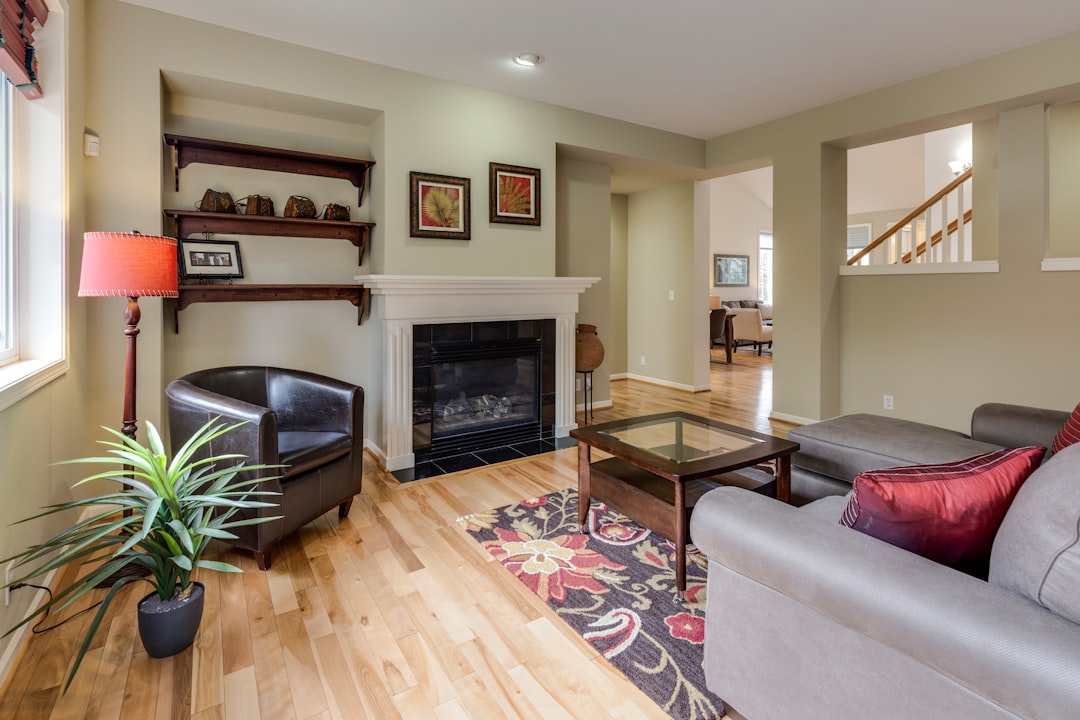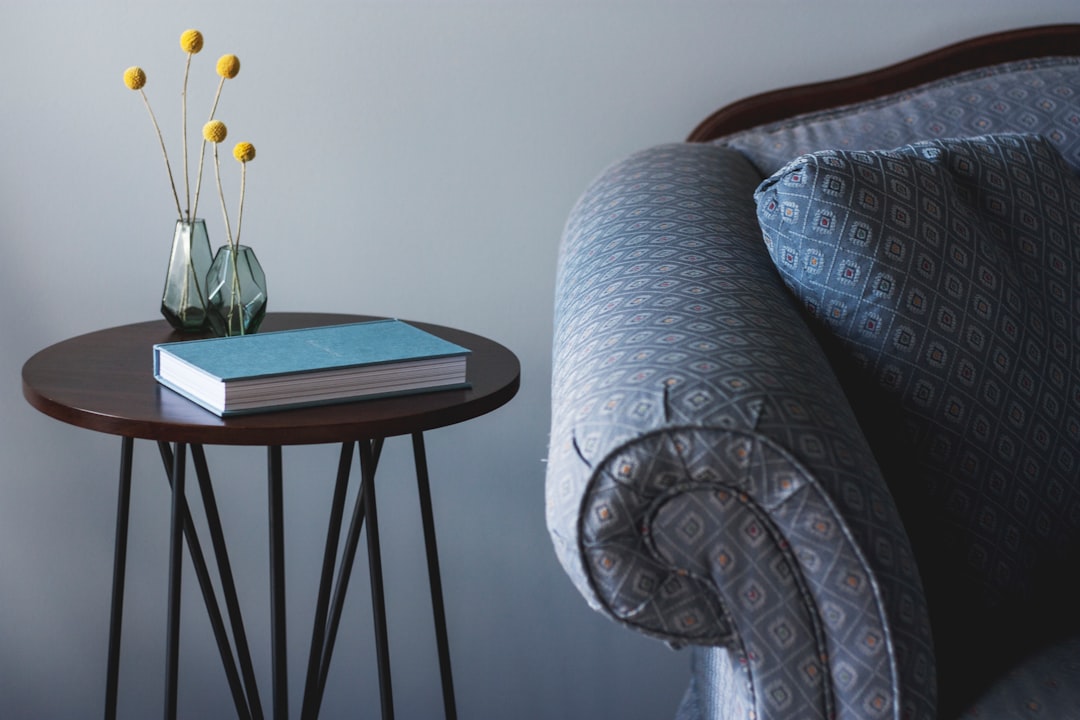Popular Formal Interior Design Styles: From Traditional to Contemporary. In this chapter, we will provide an overview of the course, define interior design styles, and approach mixing and matching styles.
Interior design is a fascinating field that allows you to create beautiful living spaces that reflect your personal style. However, with so many different interior design styles out there, it can be overwhelming for beginners to know where to start. That's why this course is designed to help you master the art of interior design by exploring a wide range of styles.

This cozy space benefits from a lot of natural light and light colors.
So what exactly are interior design styles? At its core, an interior design style refers to a specific set of characteristics that define the look and feel of a space. Some common examples include traditional, modern, minimalist, bohemian, and coastal chic. Each style has its own unique features that make it stand out from the rest.
One of the challenges in mastering interior design is figuring out how to mix and match different styles in a way that works well together. While it may seem daunting at first glance, mixing and matching can actually be an exciting opportunity for creativity.

Throughout this article, we will explore various formal and casual interior design styles such as traditional, English country style, modern French style Mediterranean style as well as retro-inspired designs like mid-century modern industrial Zen art deco Scandinavian etc., along with some 21st-century trends like contemporary transitional urban modern etc. We will also delve into how you can blend different elements from each style together seamlessly.
So, whether you're just starting out in your journey towards mastering interior design or looking for fresh inspiration for your next project; this course provides a comprehensive guide on everything you need to know about various interior designing styles from traditional all the way up until contemporary styling tips so get ready for some exciting learning ahead!
Formal Interior Design Styles
As we dive deeper into the world of interior design, it's important to understand the various styles that can be used to create stunning spaces. In this chapter, we'll explore formal interior design styles that are often associated with elegance and sophistication.
Traditional Interior Design Style
The traditional style is all about creating a classic and timeless look. It's characterized by warm colors, intricate details, and luxurious fabrics. Furniture is often ornate with curved lines and carved wood accents. This style is perfect for those who want to create a welcoming and cozy atmosphere in their home.

English Country Interior Design Style
This style takes inspiration from the British countryside, featuring cozy fabrics like wool and tweed, floral patterns, and rustic textures like exposed brick or stone walls. Furniture is typically comfortable with overstuffed cushions and armchairs perfect for reading a book by the fire.

Modern French Interior Design Style
The modern French style combines classic French elements with contemporary design features. Think clean lines paired with antique furniture pieces or bold colors mixed with delicate patterns. This style is perfect for those who want to add an air of sophistication to their home while still keeping things fresh and modern.
Mediterranean Interior Design Style
Inspired by countries along the Mediterranean Sea such as Greece or Italy, this style focuses on blending indoor and outdoor living spaces seamlessly together. Think large windows that allow natural light to flood in paired with rustic wooden furniture or bright pops of color reminiscent of sunsets over the ocean.
When it comes to incorporating formal interior design styles into your own space, it's important not to go overboard. Mixing different elements from each style can help create a unique look that still maintains an overall feel of elegance and sophistication. Don't be afraid to experiment - after all, designing your space should be a fun process!
Mastering formal interior design styles such as traditional, English country, modern French, and Mediterranean can help create a timeless and sophisticated space. Remember to choose elements that speak to you and don't be afraid to mix and match for a unique look that's all your own.
Casual Interior Design Styles
Let's delve into the world of casual interior design styles. These styles are characterized by their relaxed and comfortable feel, often incorporating natural elements and a mix of textures. We will explore six different styles in this category: Coastal Chic, Scandinavian, French Country, Tuscan, Bohemian, and Farmhouse.

Coastal Chic: Creating a Serene Beachside Atmosphere
Coastal Chic is a popular style that is inspired by beachside living. It incorporates shades of blue and green with neutral tones like white or beige to create a serene atmosphere. Textures like wicker or rattan furniture paired with natural wood accents help to bring the outdoors in. This style also features nautical elements such as ropes or anchors to add an extra touch of seaside charm.
Scandinavian: Embracing Minimalism and Natural Light
Scandinavian design is characterized by its minimalism and functionality. The color palette for this style consists mainly of whites and grays with pops of muted colors like pastel pink or blue. Clean lines and simple shapes are key components in creating this look. Natural light is also an essential element in Scandinavian design as it helps to create a bright and airy space.

French Country: Finding Elegance in Rural Charm
French Country design takes inspiration from rural France's countryside homes; it emphasizes comfort above all else while maintaining elegance throughout the room's decor elements such as distressed wood furniture pieces that add warmth to any space with their rustic patina finishes combined with floral patterns for softness.
Tuscan: Bringing Warmth and Rustic Charm to Any Space
Tuscan interior design style emphasizes warm earthy tones like terracotta reds or golden yellows paired with dark woods like mahogany or walnut for added richness; it has rustic features such as exposed wooden beams on ceilings which gives off an old-world charm vibe perfect for those who love traditional interiors that evoke timeless elegance.

Bohemian: Mixing Colors, Patterns, and Natural Elements
Bohemian interior design style features bold colors combined with rich textures; it mixes different patterns together such as paisleys or florals in the same room to create a boho chic vibe. The use of plants and natural materials such as jute and macrame adds an organic touch to the space.
Farmhouse: Combining Practicality and Coziness
Farmhouse interior design style is inspired by classic American farmhouses. This style emphasizes practicality, comfort, and simplicity in its design elements such as shiplap walls or barn doors paired with natural wood furniture pieces like rustic dining tables or benches that exude a sense of warmth and coziness in any space.
Mixing and matching these styles can be a great way to create a unique look that suits your personal taste. However, it's important to keep in mind which styles work well together. For example, Coastal Chic pairs well with Scandinavian design due to their shared love of natural light and neutral color palettes.
Casual interior design styles are perfect for those who want to create a relaxed yet stylish atmosphere in their homes. Whether you prefer beachside living or rustic charm, there is a casual style out there for everyone. By understanding the key elements that make up each style, you can mix and match them effortlessly to create your dream home's perfect aesthetic.
21st Century Interior Design Styles

As we enter the 21st century, interior design styles are evolving at an unprecedented pace. With the rise of technology and the changing demands of modern living, designers are exploring new ways to create functional yet stylish spaces that can meet our needs in this fast-paced world. In this chapter, we will explore three major 21st-century interior design styles that have emerged in recent years: contemporary, transitional, and urban modern.
Contemporary: Simplicity and Serenity in the Modern Era
Contemporary interior design style is all about simplicity and minimalism. It emphasizes clean lines, neutral colors, and uncluttered spaces. The focus is on creating a serene atmosphere that promotes relaxation and mindfulness. A key feature of contemporary design is the use of natural materials such as wood or stone to bring warmth and texture to the space.
Transitional: Balancing Old-World Charm and Modernity
Transitional interior design style combines traditional elements with modern flair. It's a balance between classic elegance and contemporary simplicity. This style incorporates both old-world charm with sleek modernity by blending antique furniture pieces with minimalist decor items like abstract art or geometric rugs.

Photo by Francesca Tosolini / Unsplash
Urban Modern: Creating an Edgy Industrial Look
Urban modern interior design style is all about creating a chic urban vibe in your home or office space. It features an industrial and edgy look characterized by exposed brick walls, concrete floors, metal accents, and open ceilings. The furniture pieces in this style are often made from reclaimed wood or repurposed items like old factory carts.
Mixing these 21st-century interior design styles can be challenging but also fun if done correctly. To mix these styles seamlessly requires understanding each style's unique characteristics while finding common ground between them.
One way to approach mixing different styles is by identifying "design besties." These are two styles that share similarities in their underlying principles or aesthetics—for example, transitional and Mediterranean-style interiors share similar color palettes incorporating neutrals like beige or muted shades of blue.
Another approach to mixing different styles is by finding "design pals." These are two styles that complement each other in terms of design aesthetics—for example, pairing contemporary and coastal chic styles can create a harmonious and relaxing space with a touch of modernity.
21st-century interior design styles offer a wide range of options for those looking to create stylish and functional spaces. By understanding the unique characteristics of each style, designers can mix and match them to create unique spaces that reflect their clients' personalities and needs. With these three major 21st-century interior design styles as inspiration, the possibilities are endless.
Retro-Inspired Interior Design Styles
Retro-inspired interior design styles have been making a comeback in recent years, and for good reason. These styles offer a unique blend of nostalgia, comfort, and creativity that can make any home feel like a haven of warmth and relaxation. In this chapter, we will explore some of the most popular retro-inspired interior design styles and how you can incorporate them into your own home.
Mid-Century Modern: Clean Lines and Geometric Shapes
The Mid-century modern style originated in the 1950s and 1960s and is characterized by clean lines, geometric shapes, and a focus on functionality. Furniture pieces from this era were often made from materials like wood, metal, or plastic.
To incorporate mid-century modern into your home, start with furniture pieces like Eames chairs or Saarinen tables. Look for pieces with simple yet striking designs that make a statement in any room they're placed in. You can also add pops of color with bold accent pillows or rugs to really make the mid-century modern aesthetic pop.
Industrial: Raw Materials and an Open Feeling
Industrial interior design style which draws inspiration from factories and warehouses. This style is characterized by raw materials like exposed brick walls, concrete floors, metal pipes & ductwork, distressed leather furniture etc.
To achieve an industrial look at home consider adding steel-framed windows or doors to create an open feeling throughout your space while incorporating exposed light bulbs as well as metal accents throughout the space such as lamps & pendant lights etc.
Art Deco: Luxurious Glamour and Bold Geometric Shapes
Another retro-inspired interior design style worth exploring is Art Deco which originated in the 1920s-30s during a time when glamour was everything! This luxurious style features rich colors such as royal blue & gold along with bold geometric shapes found on everything from furniture to wallpaper patterns.
To bring Art Deco into your home try incorporating statement lighting fixtures such as chandeliers or sconces featuring geometric shapes, mirrors with bold frames, and even adding a bar cart to your living room or dining area showcasing art deco glassware!
Zen: Simple, Soothing, and Natural
Zen interior design style is yet another retro-inspired style that has become popular in recent years. The Zen aesthetic is simple, soothing and promotes relaxation with a focus on natural materials such as wood, stone, and bamboo.
To achieve a Zen look at home consider adding elements such as natural wood furniture pieces like coffee tables or benches, incorporating plants throughout the space along with an indoor water feature such as a tabletop fountain.
Draw Inspiration from Retro Styles
In conclusion, retro-inspired interior design styles offer plenty of opportunities for creativity and personalization. Whether you're drawn to mid-century modern's clean lines and functionality or Art Deco's luxurious glamour there's something for everyone. So why not try incorporating one of these styles into your home today?

Photo by Patrick Tomasso / Unsplash
Mixing Interior Design Styles
In the world of interior design, mixing and matching different styles has become increasingly popular. However, it can be a daunting task to achieve a cohesive look while incorporating multiple design styles into one space. In this chapter, we will explore the art of mixing interior design styles and provide tips on how to make it work in your home.
Design Besties: Identifying Similar Elements That Work Together
Before diving into mixing different interior design styles, it's important to understand which styles are "design besties" or have similar elements that can work well together. For example, traditional and English country interior design styles share similar elements such as warm colors, plush fabrics, and ornate details. Modern French and Mediterranean interior design styles also share some similarities in their use of natural materials like stone and wood.
Design Pals: Mixing and Matching Styles for a Cohesive Look
Once you have identified which interior design styles are "design pals," it's time to mix them together in a way that creates a cohesive look. One way to do this is by choosing one dominant style for the room while incorporating subtle nods to the other style through accent pieces or accessories. For example, if you choose modern French as your dominant style, you could incorporate Mediterranean-inspired pottery or textiles as accent pieces.
Another approach is to create balance between the two styles by using equal amounts of each style's key elements. This can be achieved by mixing traditional furniture with modern accents like bold artwork or metallic finishes.
Two Interior Design Style Challenges: Common Color Palettes and Visual Harmony
While mixing interior design styles can be an exciting process, there are some challenges that come with it. The first challenge is finding a common color palette that works for both designs. It's important to choose colors that complement each other rather than clash.
The second challenge is avoiding clutter and creating visual harmony between the two designs. One way to combat this is by keeping larger furniture pieces consistent with one style while blending in smaller decor pieces from the other style.
Putting Interior Design Style Mixing Theory into Action: Examples and Inspiration
To see how mixing interior design styles can work in practice, let's take a look at an example. Imagine a living room with traditional furniture such as a tufted sofa and wingback chairs. To mix in some contemporary elements, you could add a sleek coffee table and minimalist artwork on the walls. For an added touch of bohemian style, incorporate patterned throw pillows and a woven rug.

